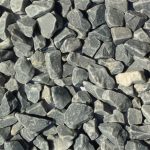Introduction:
Cobblestone is a timeless paving material that has been used for centuries to create charming and elegant pathways, driveways, and landscapes. However, the traditional process of sourcing and installing cobblestones can be time-consuming and costly. To address these challenges, cultured cobblestone options have emerged as an alternative that offers the beauty and durability of natural cobblestone but with added convenience and affordability. In this article, we will delve into the world of cultured cobblestone, exploring the various options available and highlighting their benefits.
Section 1: Understanding Cultured Cobblestone
1.1 What is Cultured Cobblestone?
Cultured cobblestone is a man-made alternative to natural cobblestone. It is created using a combination of aggregates, pigments, and binders that mimic the look and feel of natural cobblestones. The manufacturing process allows for consistency in size, shape, and color, making it easier to install and maintain.
1.2 The Benefits of Cultured Cobblestone

- Versatility: Cultured cobblestone is available in a wide range of colors, shapes, and sizes, allowing for endless design possibilities. It can be used to create intricate patterns or simple, clean lines, depending on the desired aesthetic.
- Durability: Cultured cobblestone is designed to withstand heavy foot traffic, vehicular traffic, and harsh weather conditions. It is resistant to cracking, chipping, and fading, ensuring a long-lasting and beautiful surface.
- Cost-effective: Compared to natural cobblestones, cultured cobblestone is generally more affordable. The manufacturing process allows for greater efficiency in production, resulting in cost savings that can be passed on to the consumer.
- Installation ease: The consistent size and shape of cultured cobblestones make them easier to install than natural cobblestones. Additionally, they are lighter in weight, reducing the labor and time required for installation.
Section 2: Types of Cultured Cobblestone
2.1 Concrete Cultured Cobblestone
Concrete cultured cobblestone is the most common type available on the market. It is made by pouring a mixture of cement, sand, aggregates, and pigments into molds. This type of cultured cobblestone can be produced in a variety of colors and finishes, such as smooth, textured, or antiqued, to achieve the desired look.
2.2 Rubber Cultured Cobblestone
Rubber cultured cobblestone is a more recent innovation in the field. It is made from recycled rubber and is an eco-friendly alternative to traditional cobblestones. The rubber material provides shock absorption, making it ideal for areas where safety is a concern, such as playgrounds or outdoor fitness areas.
2.3 Composite Cultured Cobblestone
Composite cultured cobblestone is a blend of natural stone aggregates and resin binders. This type of cultured cobblestone combines the durability and aesthetic appeal of natural stone with the easy installation and affordability of manufactured materials.
Section 3: Applications of Cultured Cobblestone
3.1 Residential Applications
Cultured cobblestone can be used to enhance the beauty of residential properties in various ways. From creating inviting mosaic tile and pathways to adding charm to patios and gardens, the versatility of cultured cobblestone makes it a popular choice among homeowners.
3.2 Commercial Applications
The durability of cultured cobblestone makes it suitable for a wide range of commercial applications. It can be used to create durable and visually appealing parking lots, plazas, and pedestrian areas. Its slip-resistant properties also make it a safe option for commercial spaces.
3.3 Landscaping Applications
Cultured cobblestone can be incorporated into landscaping projects to create stunning and low-maintenance features. From defining garden beds to building retaining walls, the use of cultured cobblestone adds a touch of elegance to any outdoor space.
Section 4: Maintenance and Care
4.1 Cleaning and Sealing
Cultured cobblestone requires minimal maintenance compared to natural cobblestones. Regular cleaning using mild detergents and water is usually sufficient to remove dirt and stains. Sealing the surface can provide an extra layer of protection against stains and weathering.
4.2 Repair and Replacement
In the event of damage, individual cultured cobblestones can be easily replaced without the need to remove the entire surface. This ease of repair contributes to the cost-effectiveness and longevity of cultured cobblestone installations.
Conclusion:
Cultured cobblestone offers an attractive and practical alternative to natural cobblestones. With its versatility, durability, and cost-effectiveness, it has become a popular choice for both residential and commercial applications. Whether used for driveways, pathways, or landscaping features, cultured cobblestone provides the timeless beauty of cobblestones without the limitations and challenges of natural materials. As technology and manufacturing processes continue to evolve, the options and possibilities for cultured cobblestone will only continue to expand, making it a viable choice for anyone seeking a classic yet convenient paving solution.
